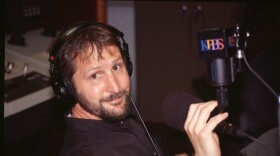Top 10 Most Ozone-Polluted Metro Areas
- Los Angeles-Long Beach-Riverside
- Bakersfield-Delano
- Visalia-Porterville
- Fresno-Madera
- Sacramento-Arden-Arcade-Yuba City, CA-NV
- Hanford-Corcoran, CA
- San Diego-Carlsbad-San Marcos
- Houston-Baytown-Huntsville, Texas
- Merced
- Charlotte-Gastonia-Salisbury, NC-SC
The San Diego region ranks seventh worst in the American Lung Association's annual State of the Air report when it comes to ozone pollution.
Los Angeles-Long Beach-Riverside was number one.
Debra Kelly with the American Lung Association in San Diego said the elderly, youngsters and people active outdoors are most affected by ozone.
"Ozone or smog is an irritating gas that actually causes burns on lung tissue, like a bad sunburn," said Kelly. "It can cause health problems the day you breathe it in and long after. Ozone can damage the respiratory track causing inflammation and irritation, coughing, tightness in the chest and shortness of breath. It can also worsen asthma symptoms and even contribute to new cases."
She said ozone can make diseases like bronchitis worse and it contributes to early death.
Kelly said ozone is worse during the summer in San Diego.
"The vehicles that we drive emit something called oxides of nitrogen and those are cooked by the sunlight and the high temperatures and it turns all of that into ozone," Kelly said.
Kelly said San Diego is not among the nation's worst cities when it comes to particle pollution, but it's still a problem.
Again, she said auto emissions are the main source.
"Try to use your car less, if you're buying a car try to get something that uses less gasoline, hybrid vehicles, plug-in electric vehicles are great," suggested Kelly. "Most of our ozone comes from driving our vehicles."
Kelly said while vehicle emissions are cleaner then they were ten years ago, the population continues to grow in San Diego County, creating more auto emissions.
On the plus side, she said the San Diego region has made enormous progress in reducing air pollution.
"Our ozone levels have decreased by over 50 percent over the last decade and our particle pollution has gone down by 30 percent," said Kelly.
The report shows the Los Angeles-Long Beach-Riverside region continues to rank among the worst in the nation when it comes to air quality, even though some improvement has been made over the past year.
The region ranked among the 10 worst in the nation in three categories of air-quality measurement - ozone (smog) pollution, short-term particle pollution and annual particle pollution.
The area was worst in the nation for ozone pollution, and second-worst for annual particle pollution.
The 12th annual release of the Lung Association's report uses the most recent EPA data collected from 2007 through 2009 from official monitors for ozone and particle pollution, the two most widespread types of air pollution.
Counties are graded for ozone, year-round particle pollution and short-term particle pollution levels.
The report also uses EPA's calculations for year-round particle levels.
The report identified Honolulu, Hawaii and Santa Fe-Espanola, N.M. as the cleanest cities - the only two cities in the nation that were among the cleanest for year-round particle pollution and also had no days when ozone and daily particle pollution levels reached unhealthy ranges.
The Lung Association says ozone and particle pollution levels today still contribute to thousands of hospitalizations, emergency room visits and early deaths every year.
The annual "State of the Air" report noted that some cities in California, including Los Angeles, were making notable improvements in reducing air pollution, with enhanced vehicle and fuel regulations playing a major role.
But the poor air quality continues to persist.
The report states that high missions from cars, trucks, buses, diesel equipment, oil refineries, manufacturing plants and home fireplaces are the culprits.





